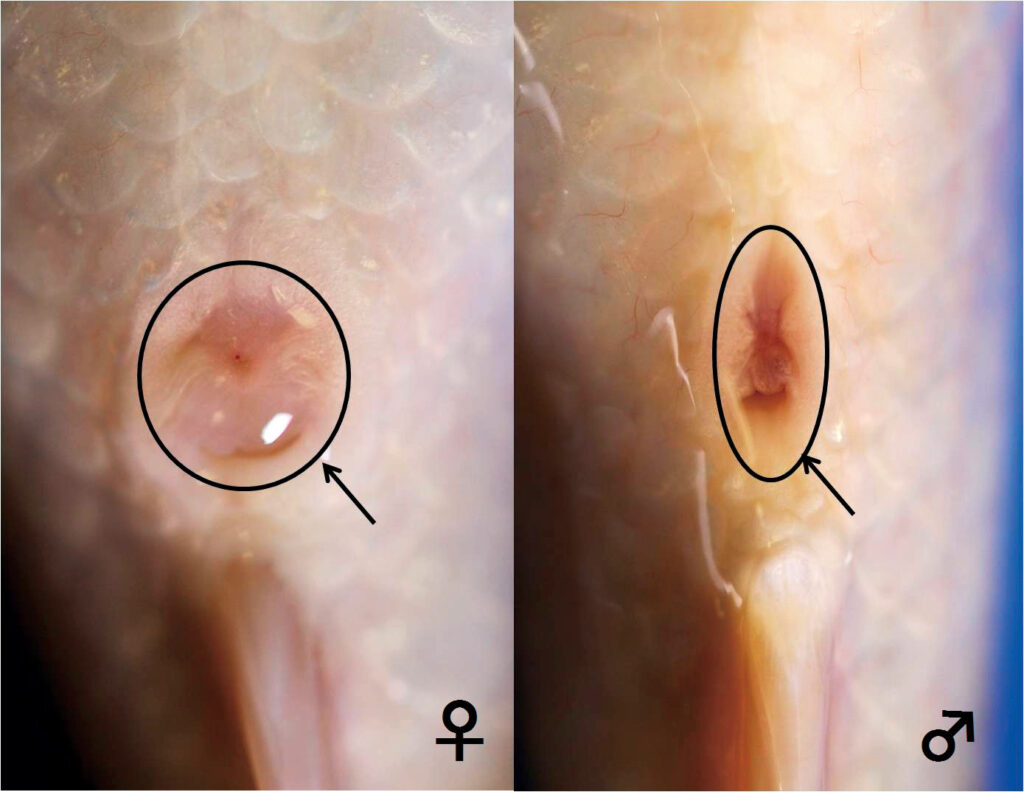Q:Throughout the year, my koi continue to show symptoms resembling papilloma, regardless of whether the water temperature is high or low. I have tried several types of medication, but there has been no improvement. What should I do? (H from Chiba Prefecture)
A:It may not be papillomas. Papillomas are a typical symptom of viral papillomatosis, which, as the name suggests, this disease is caused by a virus. This virus, known as CyHV-1, belongs to the Alloherpesviridae family. Closely related viruses include CyHV-2, which causes viral hematopoietic necrosis in goldfish, and CyHV-3, which causes koi herpesvirus disease. Since CyHV-1 cannot replicate at high water temperatures, maintaining a temperature of 25°C or higher for one week will cause all papillomas to disappear. Therefore, the condition observed in your koi is unlikely to be papillomas. However, similar symptoms may be caused by epithelial tumours or red tumours (Photo 1). Both can develop on the body surface, including the fins and may resemble papillomas at first glance. Smaller tumours, in particular, can be difficult to distinguish. There is no established treatment for these tumours. Surgical removal may lead to recovery, but recurrence is common.

Q:I purchased tosai and enjoy raising them. But I am unsure whether they were sold to me after being subjected to sleep disease. Is there any way to handle this situation( from Chiba Prefecture? (K from Shiga Prefecture)
A:Koi sleeping disease, also known as Carp edema virus disease, is a viral infection. Since it is contagious, the most important thing is to prevent the introduction and spread of the pathogen. This is the same whether the fish is a carrier of the disease (infected or suspected to be infected) or not. If there is a possibility of being a carrier, it is ideal to raise the fish separately, without mixing it with other fish. If your koi is a carrier, it will continue to shed the virus. Introducing a non-carrier fish could cause that fish to develop the disease. Moving the koi to another location may lead to the spread of the disease there.
Q:Please tell me how to distinguish between males and females. Also, what kind of koi is an intersexed koi? (N from Niigata Prefecture)
A:The female’s anus is rounded, while the male’s is elongated and tighter (Photo 2). Additionally, the female has a fuller body shape compared to the male. During the spawning season, males develop “chase spots, (white spots)” on their gill covers and fins, giving their overall appearance a rough texture. However, no method can guarantee 100% accuracy in distinguishing koi. Some koi may be intersex, as you mentioned, and there are cases where a koi with a female-like vent may actually be male or where a male may not develop chase spots. Therefore, there is no definitive method to consistently and easily distinguish all koi. Although the term “intersex koi” may not be entirely accurate, it appears to refer to koi that do not fully develop into either males or females. Dissection often reveals that these koi have underdeveloped gonads.














